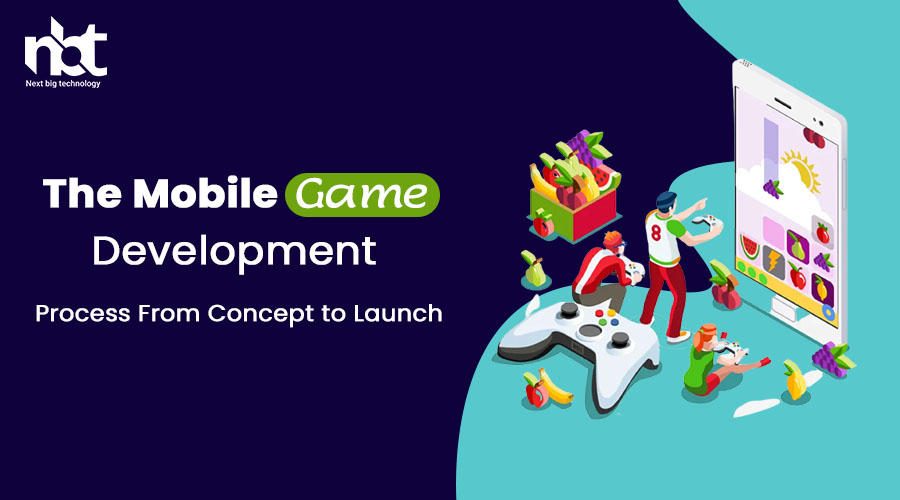Table of Contents
Introduction:
Mobile gaming has become a booming industry, capturing the attention of millions of users worldwide. Behind every successful mobile game lies a well-executed development process that transforms ideas into immersive gaming experiences. In this blog, we will delve into the mobile game development process, outlining the key stages involved from concept to launch. Understanding this process will provide valuable insights for aspiring game developers and enthusiasts looking to embark on their mobile game development journey.
Conceptualization and Ideation:
The first stage of mobile game development is conceptualization and ideation. This involves brainstorming and generating ideas for the game concept, mechanics, storyline, characters, and visual style. The goal is to create a unique and engaging concept that will resonate with the target audience.
Game Design:
Once the game concept is finalized, the next step is game design. This involves creating a detailed game design document (GDD) that outlines the game mechanics, levels, objectives, user interface, and overall gameplay experience. The game design phase sets the foundation for the development process and serves as a roadmap for the development team.
Prototyping:
Prototyping is a crucial step in mobile game development. It involves creating a basic version of the game to test the core gameplay mechanics, controls, and user interface. Prototyping helps identify any design flaws or usability issues early on, allowing for iterations and refinements before moving forward.
Art and Asset Creation:
The art and asset creation phase involves designing and creating the visual elements of the game. This includes character designs, animations, background artwork, level designs, and other graphical assets. The art style should align with the overall concept and target audience, creating a visually appealing and immersive gaming experience.
Development:
The development stage is where the actual coding and programming of the game take place. Game developers use programming languages and development tools to bring the game to life. This includes implementing game mechanics, integrating assets, creating levels, handling user input, and optimizing performance for various mobile devices.
Quality Assurance and Testing:
Quality assurance (QA) and testing are crucial to ensure a bug-free and enjoyable gaming experience. QA testers perform rigorous testing to identify and fix any gameplay issues, performance bottlenecks, or technical glitches. It involves testing various aspects, such as gameplay mechanics, user interface, audio, compatibility, and performance across different mobile devices and platforms.
Game Optimization:
Optimizing the game is essential to ensure smooth performance and efficient resource usage. This includes optimizing code, graphics, and audio assets to minimize load times, reduce memory usage, and ensure compatibility across a wide range of mobile devices. Optimization helps provide a seamless gaming experience while maximizing device resources.
Monetization and In-Game Economy:
For commercial mobile games, monetization strategies and in-game economies need to be considered. This involves integrating in-app purchases, advertisements, or subscription models into the game. Careful consideration should be given to strike a balance between generating revenue and maintaining an enjoyable player experience.
Game Launch and Marketing:
Once the game is polished and ready, it’s time for the launch. This involves submitting the game to app stores, such as the Apple App Store or Google Play Store, and ensuring compliance with their guidelines. Additionally, creating a comprehensive marketing plan is crucial to generate awareness and attract users to the game. This may include app store optimization, social media marketing, influencer collaborations, and other promotional strategies.
Post-Launch Support and Updates:
The mobile game development process doesn’t end with the game’s launch. Ongoing support and updates are necessary to keep the game relevant and address any issues or feedback from players. Regular updates, bug fixes, new content, and feature enhancements help maintain user engagement and ensure the longevity of the game.
Conclusion:
The mobile game development process is a multi-faceted journey that involves creativity, technical expertise, and meticulous attention to detail. From concept to launch, each stage requires careful planning, collaboration, and iteration to create an immersive and enjoyable gaming experience. By understanding the mobile game development process, aspiring game developers can navigate the complexities and challenges, ultimately bringing their ideas to life and captivating audiences in the dynamic world of mobile gaming.
Thanks for reading our post “The Mobile Game Development Process: From Concept to Launch”. Please connect with us to know more about Mobile Game Development.










